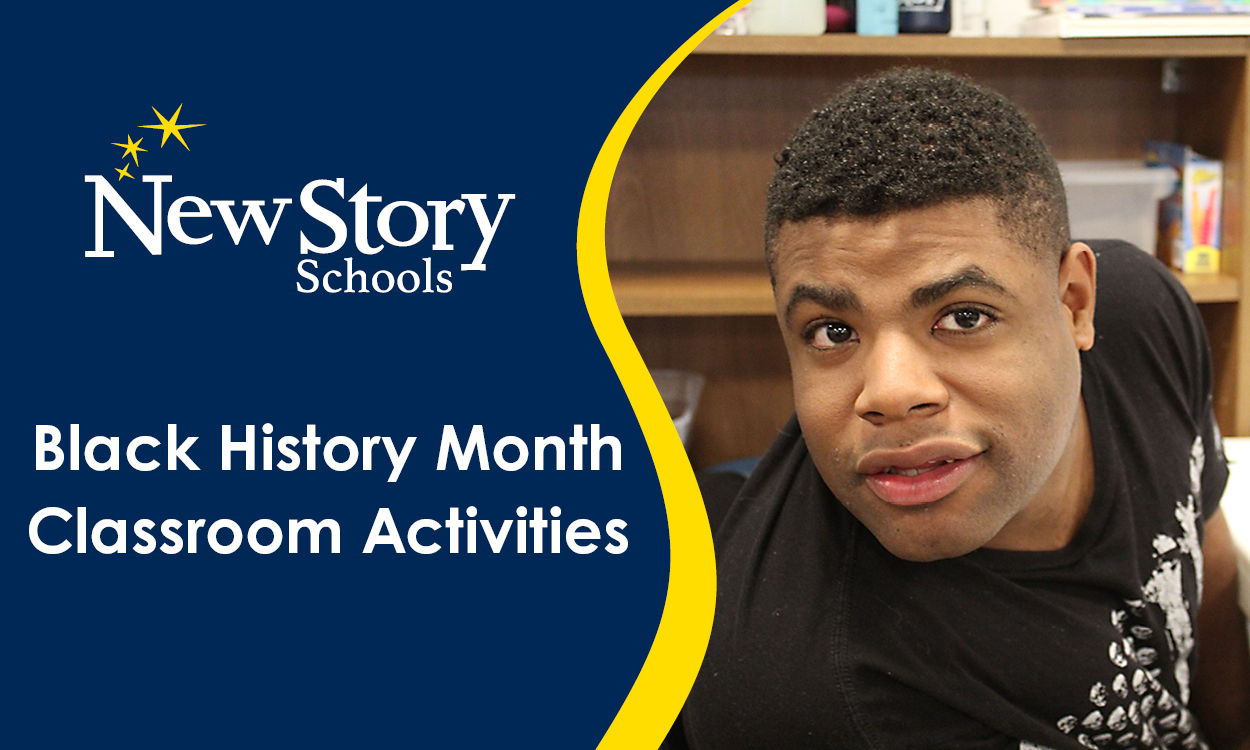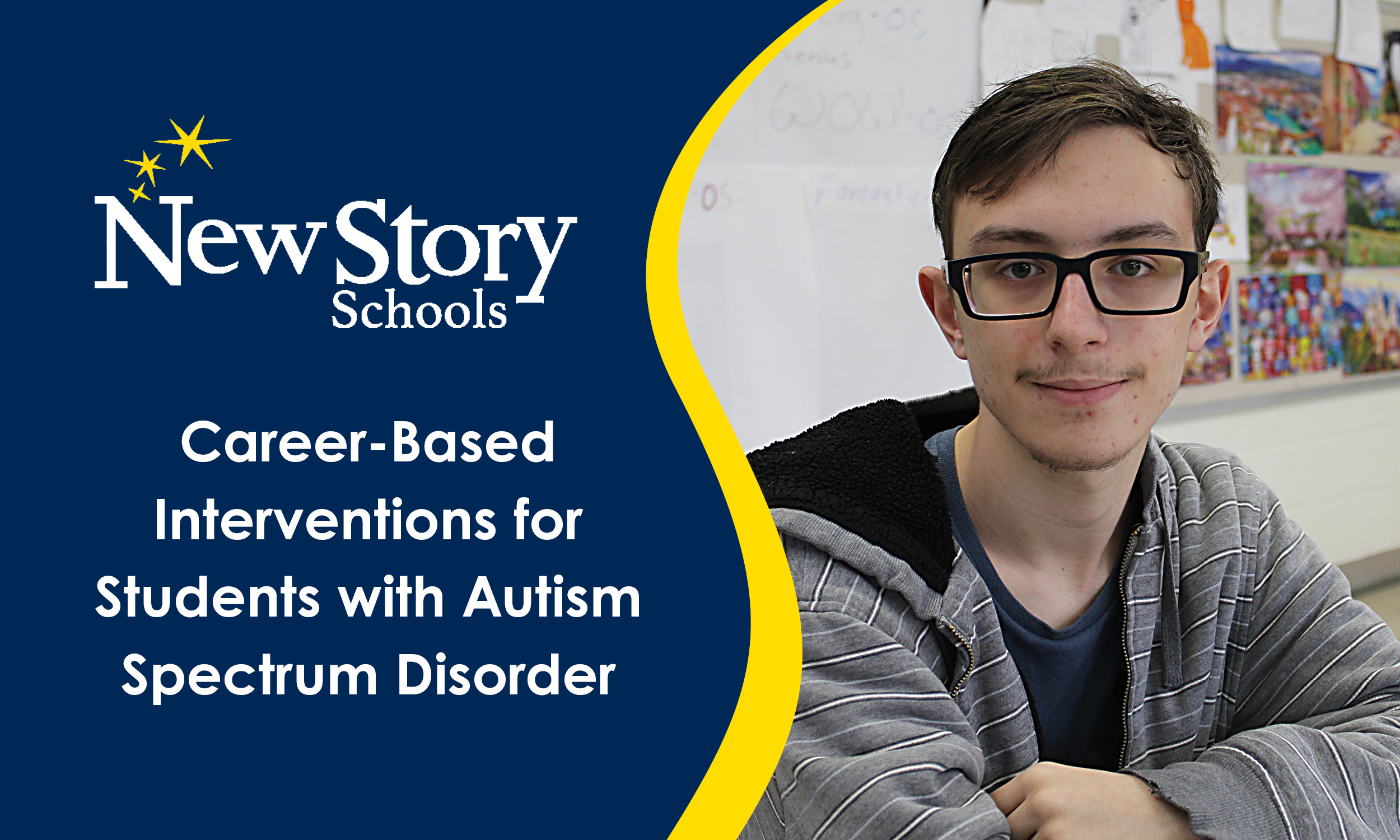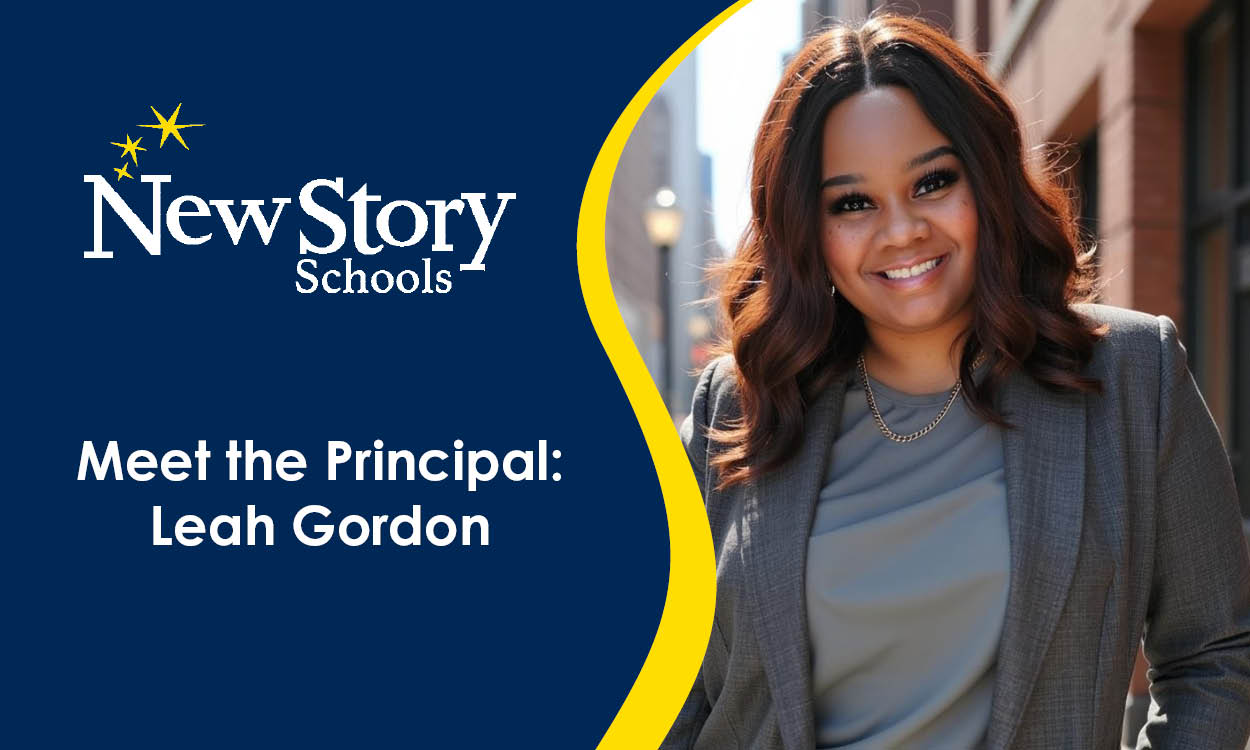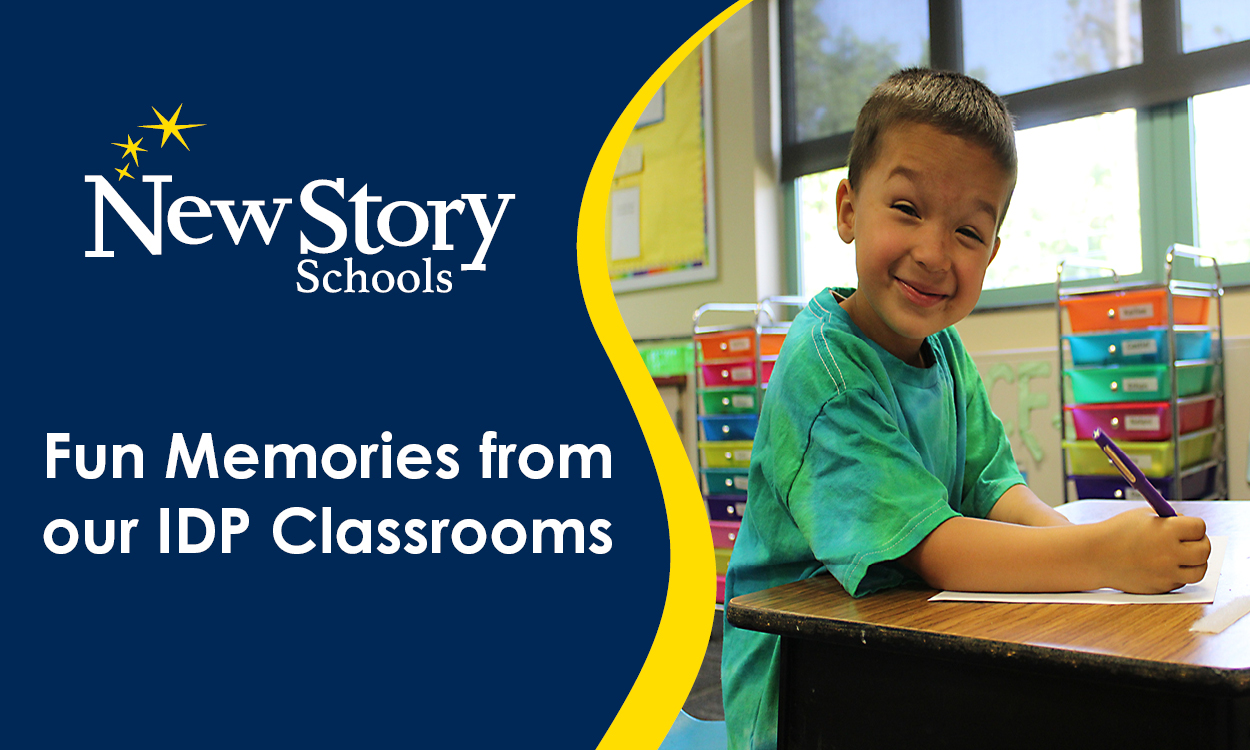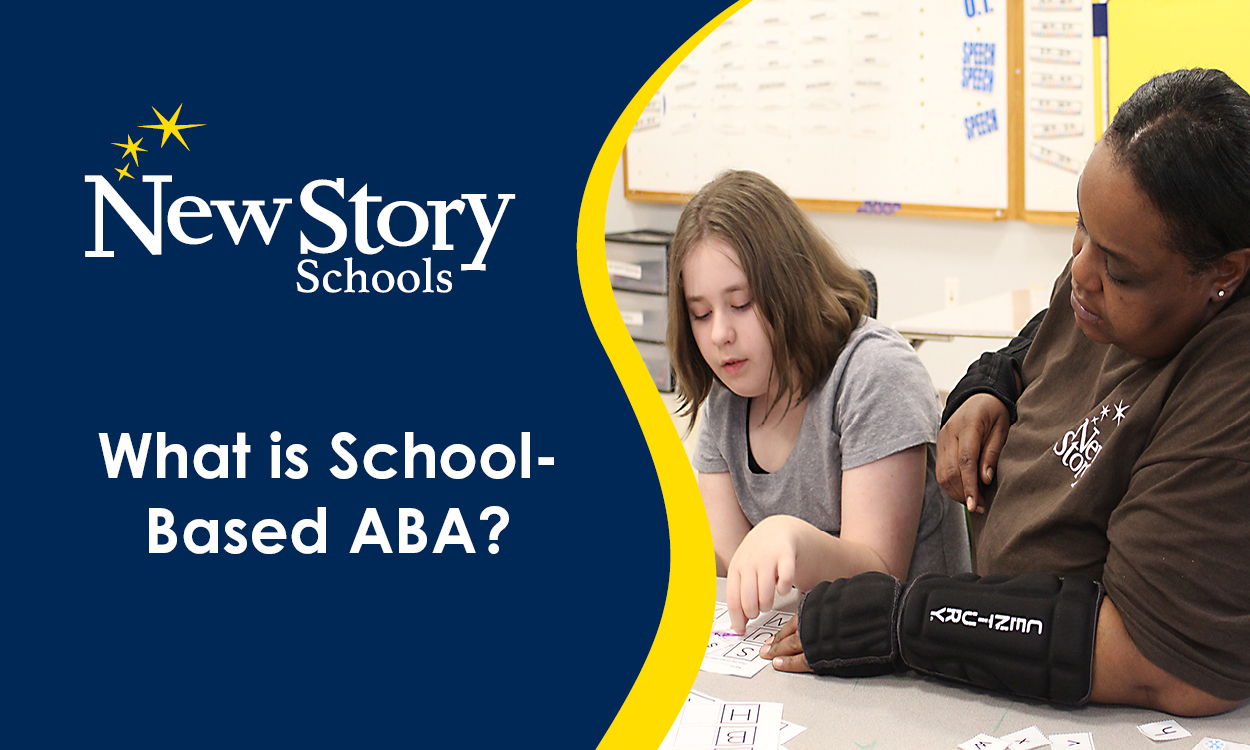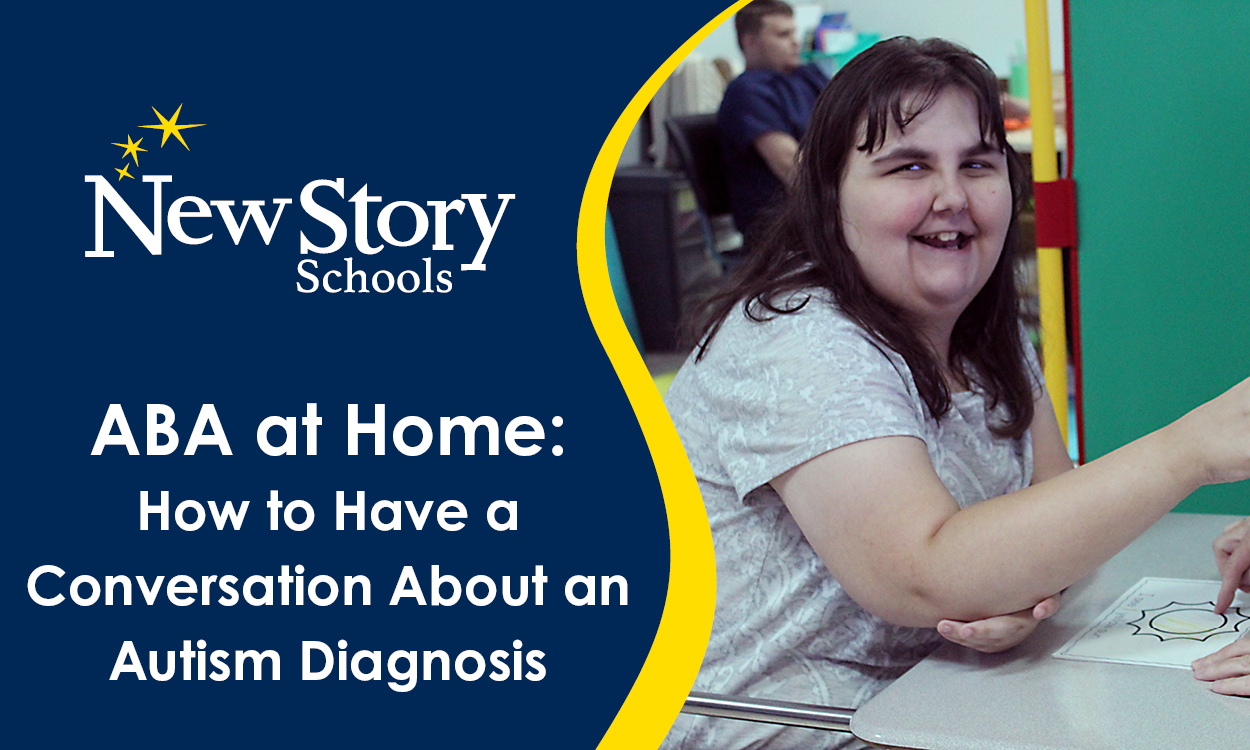Shaping and Modeling Language at Home
Posted: February 08, 2024 | Written By: Nina Brand | Category: At Home Help
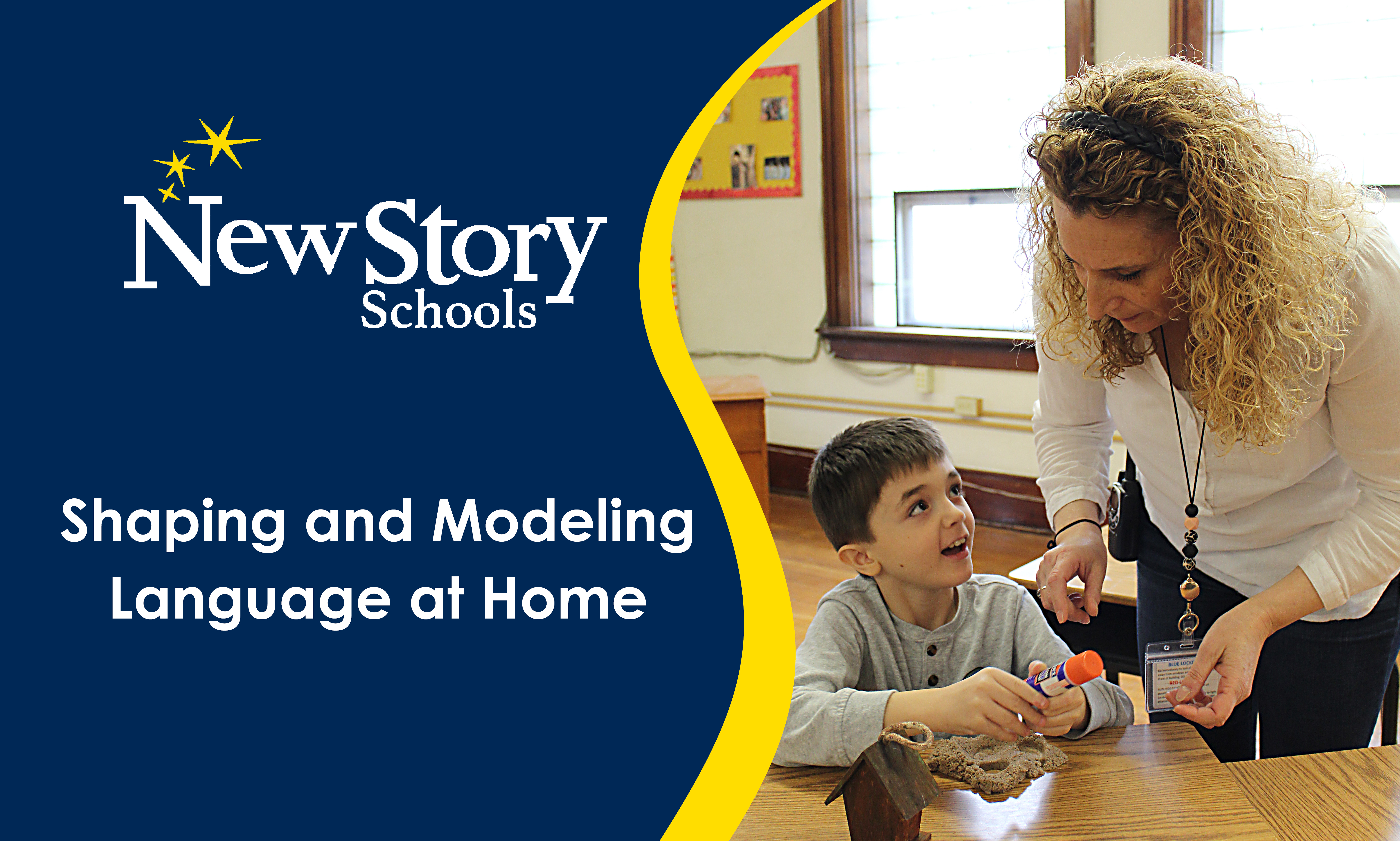
Written by Nina Brand, Speech Therapist at New Story Schools in Columbus, OH.
Very often, as school speech therapists, we don’t get much time with families and caregivers. I love being able to show the people who care for my students how we work to shape students’ language. Research is showing us that children learn language in one of two ways: building from single words up, or from word bundles at the start.
Many, but not only people with autism, learn language with what we call Gestalt Language Processing. This is the grasping of a chunk of words and using that chunk or phrase to send a message. Some do this by repeating phrases they’ve heard from caregivers, books, movies, or advertisements. All of these word chunks are attempts to convey a message. Very often it takes some time to figure out what that message might be, and at times we know exactly what the child is trying to say. At school we try to use the word bundles children use to shape them into more traditional messages so other people can understand what they’re trying to convey. Two scenarios are detailed below of how you might put this practice into action at home to help shape your student’s language.
Scenario 1
I walk into a room and see a student twirling around repeatedly and singing, “I’m a map, I’m a map, I’m a map.” I know this student loves Dora the Explorer and he has been watching and listening to a specific episode where Dora’s map is twirling around and singing this song. I join the student and ask if I can be a map too. I sing along, “I’m a map, I’m twirling.” This is how I show the student I understand what he’s telling me, and I model what he’s saying at the same time. Next, I change what I’m doing physically. I twirl, then I jump, and I say, “I’m a map, I’m twirling, I’m jumping.” The student eventually says, “I’m twirling. I’m jumping.”
Try to figure out how what your student is saying or writing is related to what they want or are doing and get into their frame of mind. Use their words to show them you understand that they’re trying to tell you something. Then try to shape their message into the one that really tells you what they want.
Scenario 2
A student is struggling to take a sticker off a sheet, and it’s really stuck. She says, “Oh no, the tractor has a flat tire.” She then pushes the paper toward you for help. She’s saying the sticker is stuck, just like the tractor is stuck and cannot be moved. You say, “Oh no, the tractor has a flat tire. Oh no, the sticker is stuck, it won’t move.” She will see that you understood her message and then you can model the way other people will understand the message by saying, “Oh no, the sticker is stuck.” Anytime you see something else that won’t work, you can use their phrase, “oh no, the cap is stuck,” “oh no, the soap is stuck,” “oh no, shoe is stuck.”
Have fun figuring out what their phrases are and shaping them into short phrases to be used in other situations too. To learn more about this method of language learning and development, I encourage you to research Gestalt Language Processing. If you’d like to read a fascinating book about language learning and about experiences from adults who learned language differently, I recommend ‘Uniquely Human’ by Barry Prizant.
Want to be notified of new articles and resources from New Story Schools? Submit your email and opt into our newsletter!


